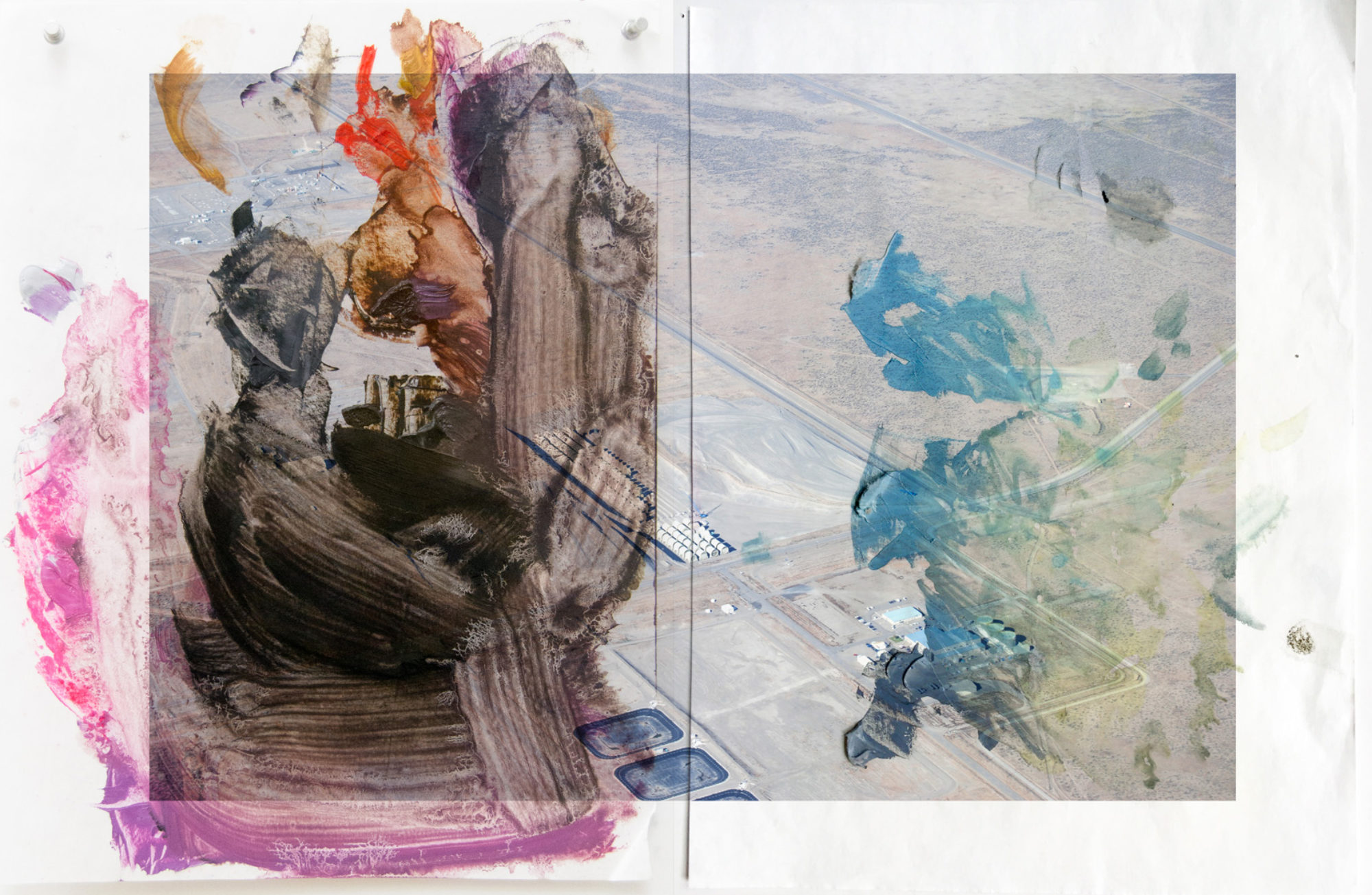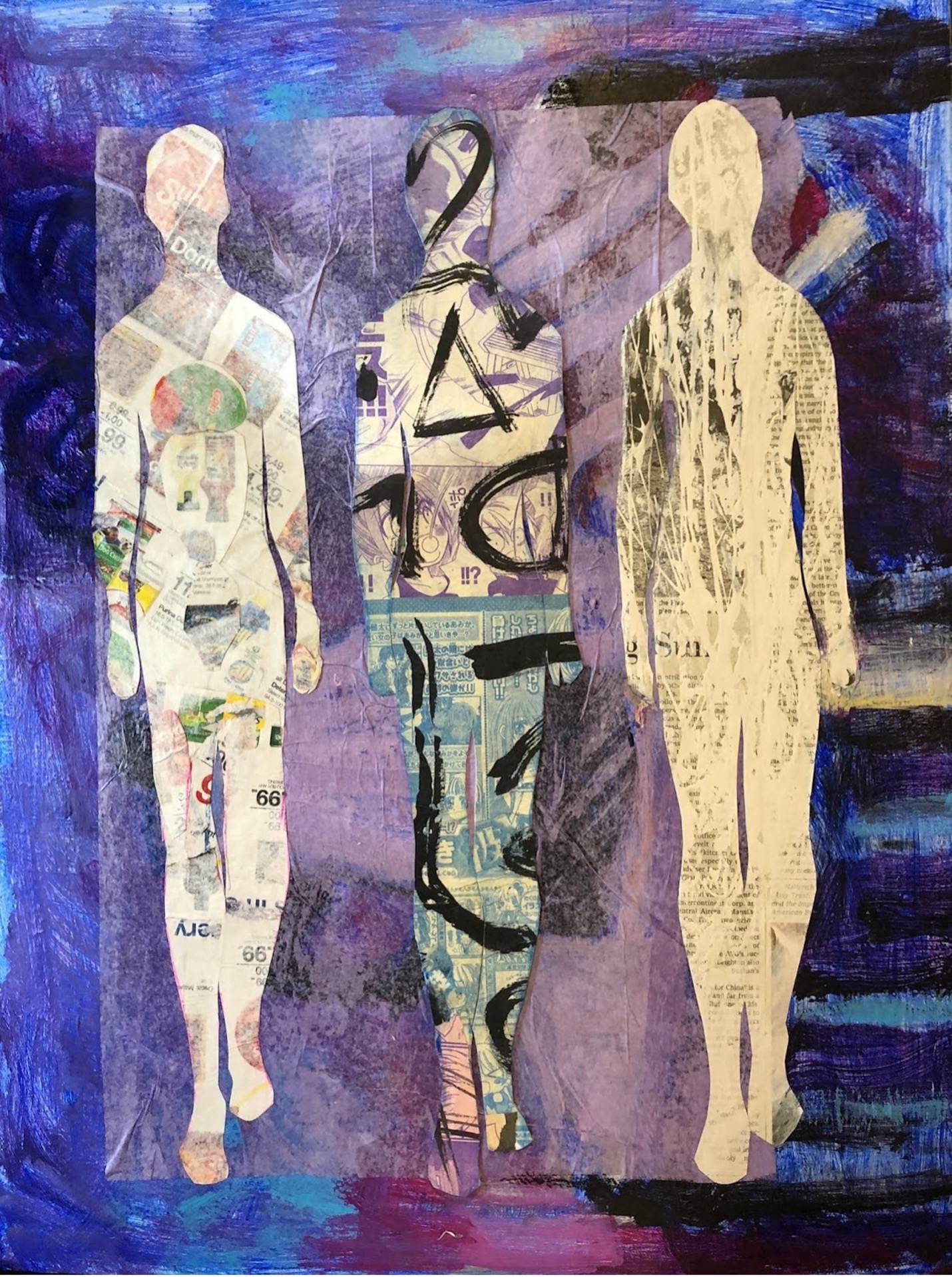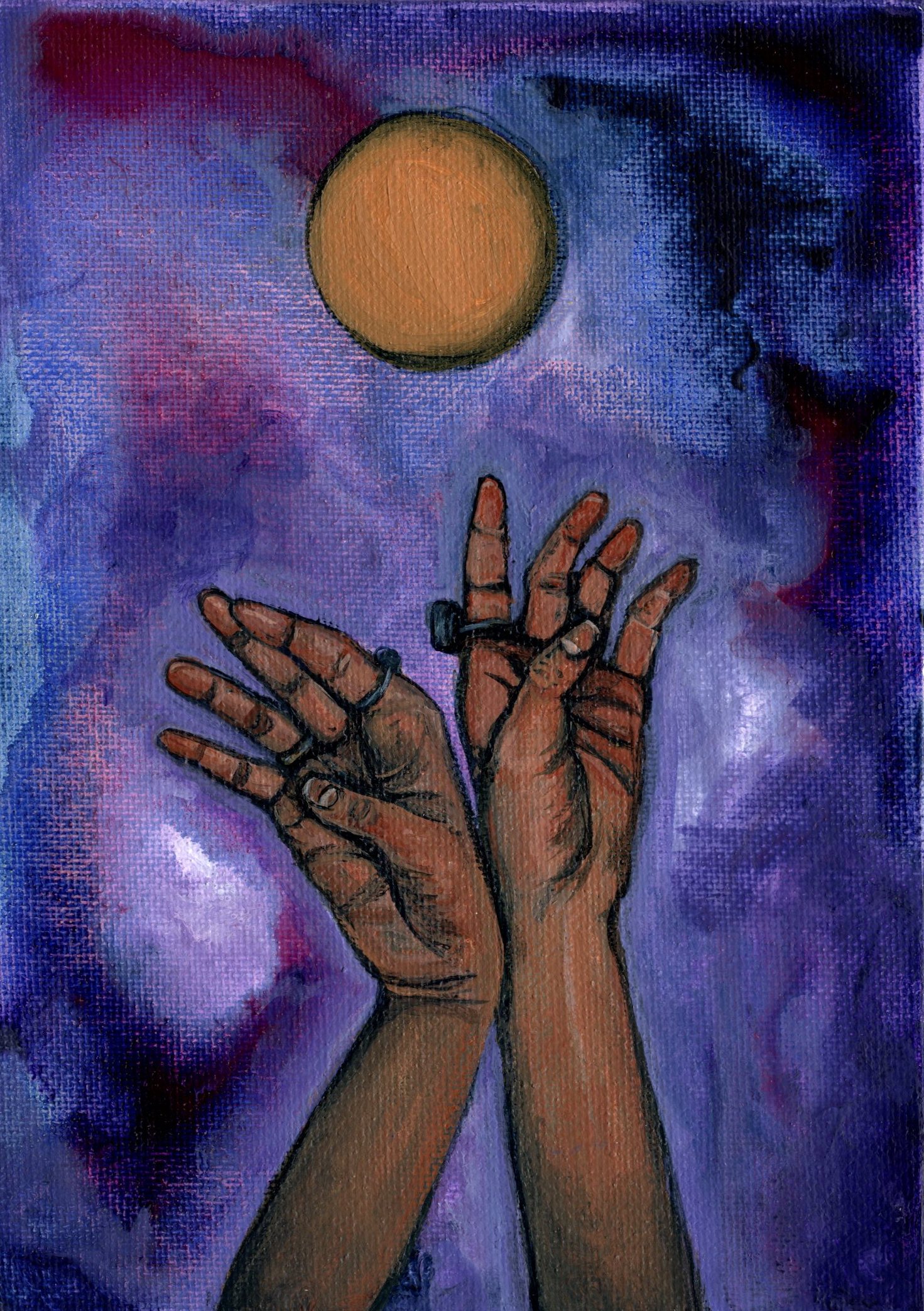I.
How, exactly, does the resurrected body appear? What does it look like? A ghost? A zombie, half-rotting? Some Frankenstein-ian creature stitched together and then electrified? Is it a magic trick? A metaphor?
In the Gospels, the resurrected body is corporeal—it bears wounds, it is capable of being touched, it can digest fish. And yet, as seen on the road to Emmaus or at the tomb by the garden, there is a mysterious, almost dream-like quality to the flesh as well—Christ is unrecognizable until he is. A transfiguration has occurred that makes the body both literal and metaphorical—capable of touch and being touched, yet no less mysterious for all our examination.
Portraiture, one of the oldest art forms, uses the human figure (or the abstraction of that figure) as the site of narrative. Through depictions of the body, the artist communicates power, identity, virtue. The pieces selected here, though not all portraits, were chosen for this reason—the use of the body as the site of ongoing revelation.
II.
Something in the Way
GJ Gillespie
GJ Gillespie’s Something in the Way presents three silhouetted figures in a form of present absence. They are clearly there, yet also obscured—both through through the contrast created by that delicate, nearly-transparent, scrap of tissue paper, setting them apart from the rest of the composition, as well as the overlaid mixed-media elements (a newsprint word “Sum” has been partially obscured by paint, suggesting the word “Sin”). For a moment, it is easier to see the figures’ newsprint, Doritos, or manga, rather than as bodies at all—a toggling back and forth between recognition and non-recognition.
III.
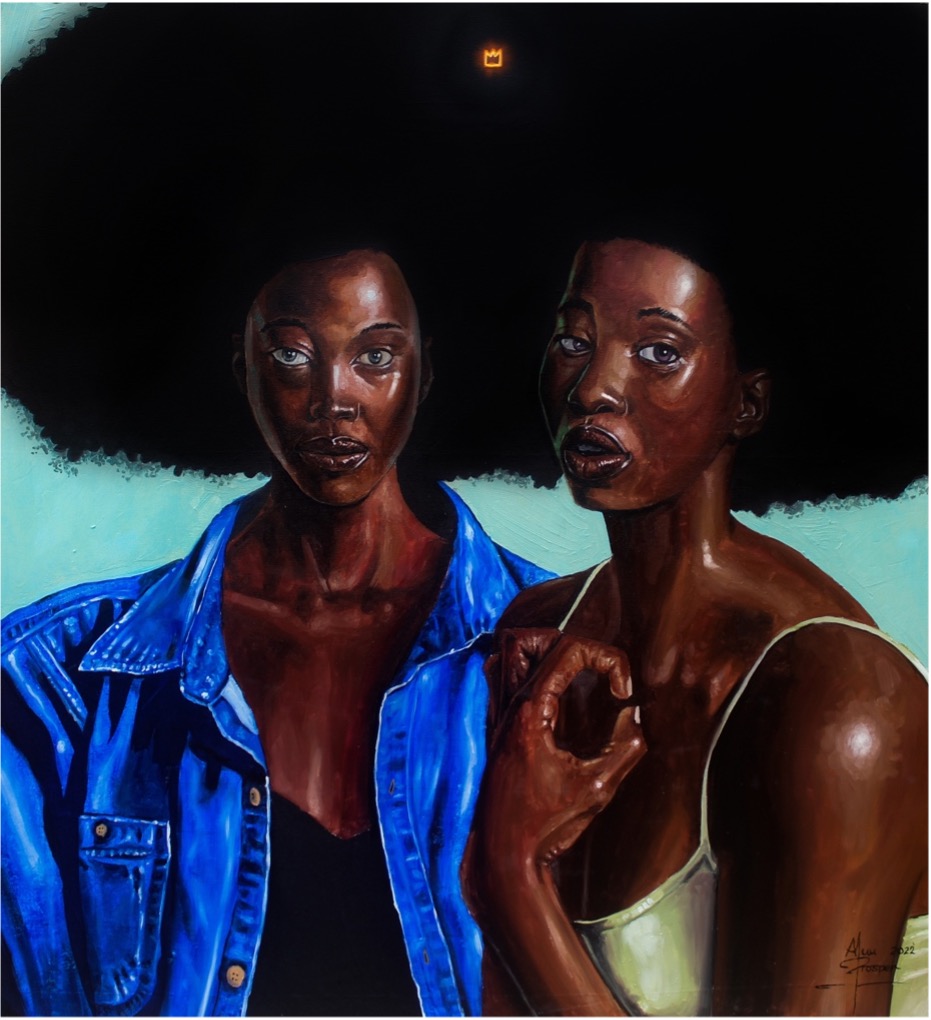
My Mother’s Daughter
Aluu Prosper
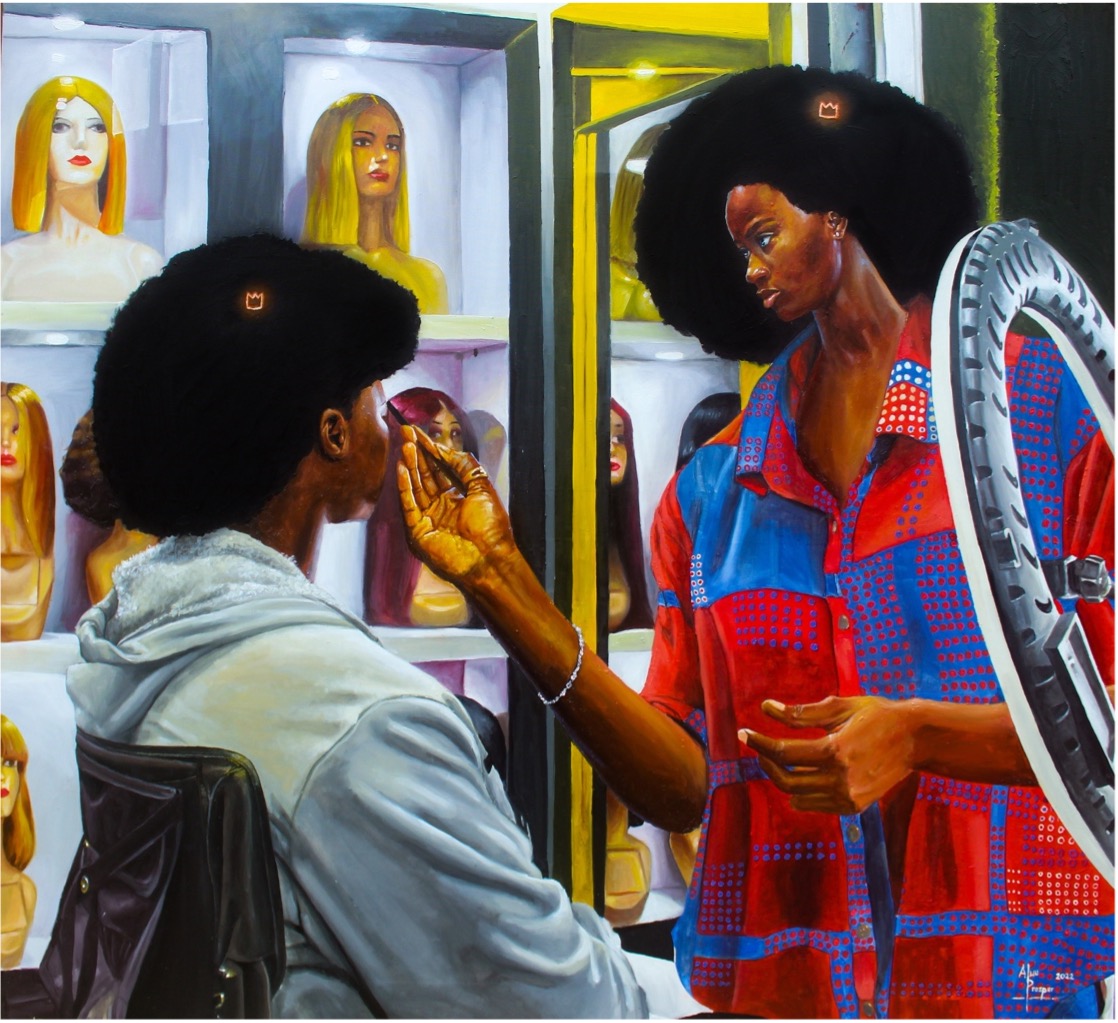
The Beauty Artist
Aluu Prosper
In Aluu Prosper’s Treasure at the Artist’s Block, the two women stand together, the halos of their hair overlapping into a single, luminous cloud. This, as well as the left woman’s blouse, are depicted in a flat black which, taking up nearly half of the composition, could almost read as a dramatic void in the painting—a shape punched out of nothing, an absent presence. The small, glowing crown resting between them, however, unifies the women and establishes the hair as a positive, rather than negative space. The attention is drawn, therefore, to the dramatic curled hand offset slightly to the right—a pose that looks stranger as more attention is given to it.
Similarly, in The Beauty Artist, the eye is brought, first, to the elongated forearms and hands of the beauty technician as she holds the makeup brush. Her pose suggests a master painter standing before her easel. The women are set against rows and rows of plastic, dead-eyed mannequin busts, their iconic afros once again punching a hole through the canvas. This, perhaps, creates the tension of reality cutting against the synthetic, highlighting the corporeality of the bodies illuminating the foreground. Prosper’s work, additionally, through the subtle and somewhat unsettling manipulation of proportions, draws attention to the hands, the torsos. This manipulation, in dialogue with the hyper-realistic balance of light and color, creates a body that is both literal and mythical.
IV.
Finally, in Larissa Hauck’s Dream-Walker, two hands rise, propped against each other, balanced in the center of the canvas. Color is layered in such a way that the texture of canvas remains visible, giving the piece a subtle, textured quality, and bringing a sense of self-awareness to the piece as a work of art. The dreamy, purple-color wash and centered composition immediately recall some elements of Gillespie’s work. Though, instead of working with the entire abstracted human body, Hauck only presents a part of the body: the hands, in exquisite detail. While the forearms extending beyond the painting, of course, suggest the continuation of a body—the assumption of something more—we are also challenged to consider the hands themselves as a character and a narrative in their own right. They are a part of the body, and yet, whole beings entirely to themselves as they run tangent to each other. The remainder of the body both does and does not exist within the context of the artwork. Or rather, if there is a continued body, it is created entirely by the viewer’s belief.
Lily Jurskis
Visual Art Editor
GJ Gillespie is a collage artist living in a 1928 Tudor Revival farmhouse overlooking Oak Harbor on Whidbey Island (north of Seattle). In addition to natural beauty, he is inspired by art history—especially mid century abstract expressionism. The “Northwest Mystics” who produced haunting images from this region 60 years ago are favorites. Winner of 19 awards, his art has appeared in 57 shows and numerous publications. When he is not making art, he runs his sketchbook company Leda Art Supply.
Born and raised in Nigeria, West Africa, Aluu Prosper makes figurative and expressive paintings. He studied building technology as well as architectural design at the Federal University of Technology Owerri. He also acquired expertise in graphic design, illustration, 3D modelling, video editing and animation. Prosper’s work does not aim to rehearse the negative stereotypes in African people’s relationship with other races; instead, he strives to look beyond negative experiences by painting luscious images of the African people resplendent in beautiful apparel and striking pieces of diadem. These crowns represent the great potential of Africa, which he believes will one day unravel in the fullness of time. In 2018, he had his first official art exhibition where he won the Peace Poster award for his painting on Peace at the ANBUKRAFT. He has participated in several exhibitions and competitions since then and has won some of them. In 2020, he was signed as a brand ambassador to TECNO mobile Nigeria on a one year deal. His works has appeared in countries such as South Africa, United kingdom, United States, Canada, Japan e.t.c
Larissa Monique Hauck is a queer visual artist who graduated from the Alberta University of the Arts in 2014, where she received a BFA with Distinction. Her artwork has been featured in multiple regional and national group exhibitions as well as a growing number of international exhibitions. She has been selected for inclusion in events such as Nextfest 2018 (Edmonton, AB), Nuit Rose 2016 (Toronto, ON), and the 9th Annual New York City Poetry Festival 2019 (New York, US). Her drawings and paintings have also been featured in publications such as Creative Quarterly (US), Wotisart Magazine (UK), Minerva Rising (US), and various others.
